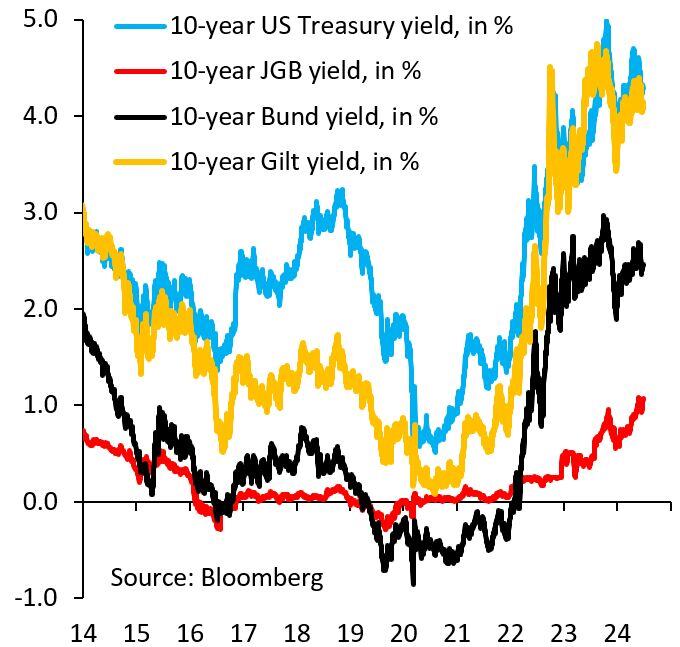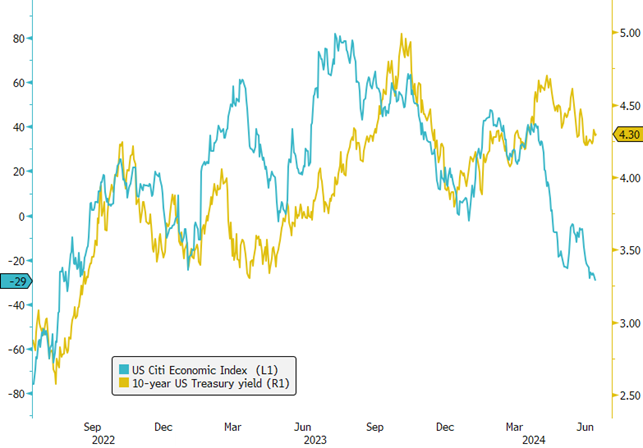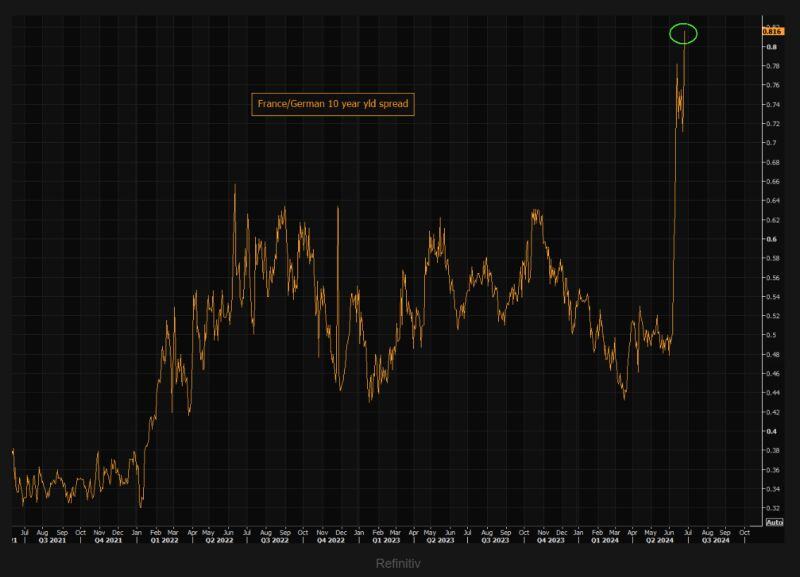Straight from the Desk
Syz the moment
Live feeds, charts, breaking stories, all day long.
- All
- us
- macro
- equities
- Food for Thoughts
- sp500
- Central banks
- Bonds
- markets
- bitcoin
- Asia
- technical analysis
- investing
- europe
- Crypto
- geopolitics
- performance
- gold
- tech
- Commodities
- AI
- nvidia
- ETF
- earnings
- Forex
- Real Estate
- banking
- oil
- Volatility
- china
- magnificent-7
- nasdaq
- apple
- emerging-markets
- energy
- Alternatives
- switzerland
- trading
- tesla
- sentiment
- russia
- Money Market
- assetmanagement
- UK
- ESG
- Middle East
- amazon
- microsoft
- ethereum
- meta
- bankruptcy
- Turkey
- Healthcare
- Industrial-production
- Global Markets Outlook
- africa
- brics
- Market Outlook
- Asset Allocation Insights
- Flash
- Focus
📉 Is a Fed Rate Cut on the Horizon Before the Elections?
Recent economic data, especially in the job market, has underperformed, and Fed Chairman Jerome Powell's dovish remarks at the Sintra Forum have shifted market expectations. Reinforcing this sentiment, the just-released US Core CPI came in below expectations at 3.3%. Investors are now buzzing about a potential rate cut as early as the Fed’s September meeting, right before the US Presidential Elections. This is clearly reflected in the yield curve, with the spread between the 3-month and 2-year US Treasury yields dropping sharply from -60 bps to -85 bps over the past three days. This significant drop indicates an 85% probability that the market is pricing in a rate cut by September. The critical question remains: Will the US macroeconomic landscape deteriorate enough to prompt the Fed to start normalizing its monetary policy before the elections? #Fed #MonetaryPolicy #InterestRates #EconomicOutlook #Investing #FinancialMarkets #SyzGroup
The Yen is tumbling.
That's happening because 10-year JGB yield is being kept artificially low by BoJ. Japan has to do that because debt is 250% of GDP, so allowing 10-year JGB yield to rise freely would lead to a debt crisis. Yen weakness is the price Japan has to pay for this. Source: Robin Brooks, Bloomberg
A 2nd Trump term is a problem for the Euro periphery. US deficits will widen, putting upward pressure on global yields as the US sucks in capital.
That's bad news for high debt Italy and Spain. Both countries had all the time in the world to cut debt. Both countries did nothing. Source: Robin Brooks
Q2 Fixed Income Review Chart: US Treasury Yields Resilient Amid Mixed Economic Signals!
As the second quarter of 2024 unfolded, a noticeable normalization of the US economy became evident, marked by a significant downturn in the US Citi Economic Index from 33 to -29, reaching its lowest level in nearly two years. Despite these economic headwinds, the 10-year US Treasury yields closed the quarter slightly higher at 4.30%, a 10-basis point increase. This apparent contradiction between economic normalization and rising yields can be largely attributed to substantial US Treasury issuances, necessary to fund the expansive US fiscal deficit. Furthermore, persistent inflationary pressures have prompted the central bank to delay the anticipated rate cut from July to November 2024, adjusting expectations amid changing economic conditions. As we approach a typically low-liquidity summer period, any shifts in interest rates could be magnified. Additionally, with the US presidential election on the horizon, market sentiments could be further influenced by electoral outcomes. The looming question is: Which will have a greater impact on third-quarter rates—the slowdown in the US economy, the ongoing inflationary and supply pressures, or the unfolding political landscape? #Finance #Economy #TreasuryYields #EconomicIndicators #Inflation #FiscalPolicy #InterestRates #USPresidentialElection #MarketAnalysis Source: Bloomberg
Net inflow to TLT! Is the rate cut hope-timism back?
Source: Andreas Steno Larsen, Steno Research, Macrobond
The end of ice age... Will we come back one day to a world of negative yielding debt???
Below chart shows the USD Market Value of negative yielding debt. It peaked above $18T after Covid... Source: Bloomberg
Investing with intelligence
Our latest research, commentary and market outlooks








